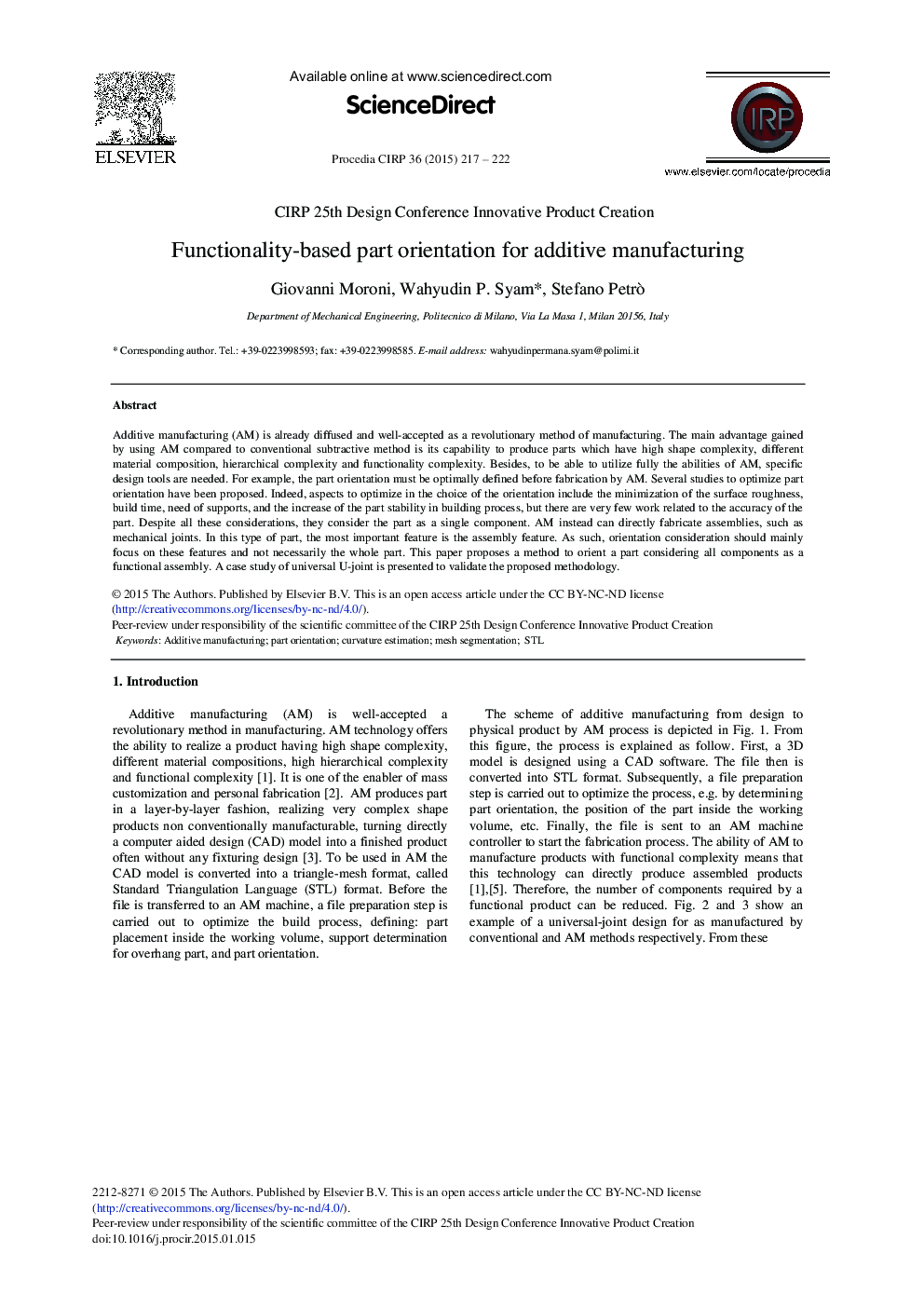| Article ID | Journal | Published Year | Pages | File Type |
|---|---|---|---|---|
| 1699421 | Procedia CIRP | 2015 | 6 Pages |
Additive manufacturing (AM) is already diffused and well-accepted as a revolutionary method of manufacturing. The main advantage gained by using AM compared to conventional subtractive method is its capability to produce parts which have high shape complexity, different material composition, hierarchical complexity and functionality complexity. Besides, to be able to utilize fully the abilities of AM, specific design tools are needed. For example, the part orientation must be optimally defined before fabrication by AM. Several studies to optimize part orientation have been proposed. Indeed, aspects to optimize in the choice of the orientation include the minimization of the surface roughness, build time, need of supports, and the increase of the part stability in building process, but there are very few work related to the accuracy of the part. Despite all these considerations, they consider the part as a single component. AM instead can directly fabricate assemblies, such as mechanical joints. In this type of part, the most important feature is the assembly feature. As such, orientation consideration should mainly focus on these features and not necessarily the whole part. This paper proposes a method to orient a part considering all components as a functional assembly. A case study of universal U-joint is presented to validate the proposed methodology.
